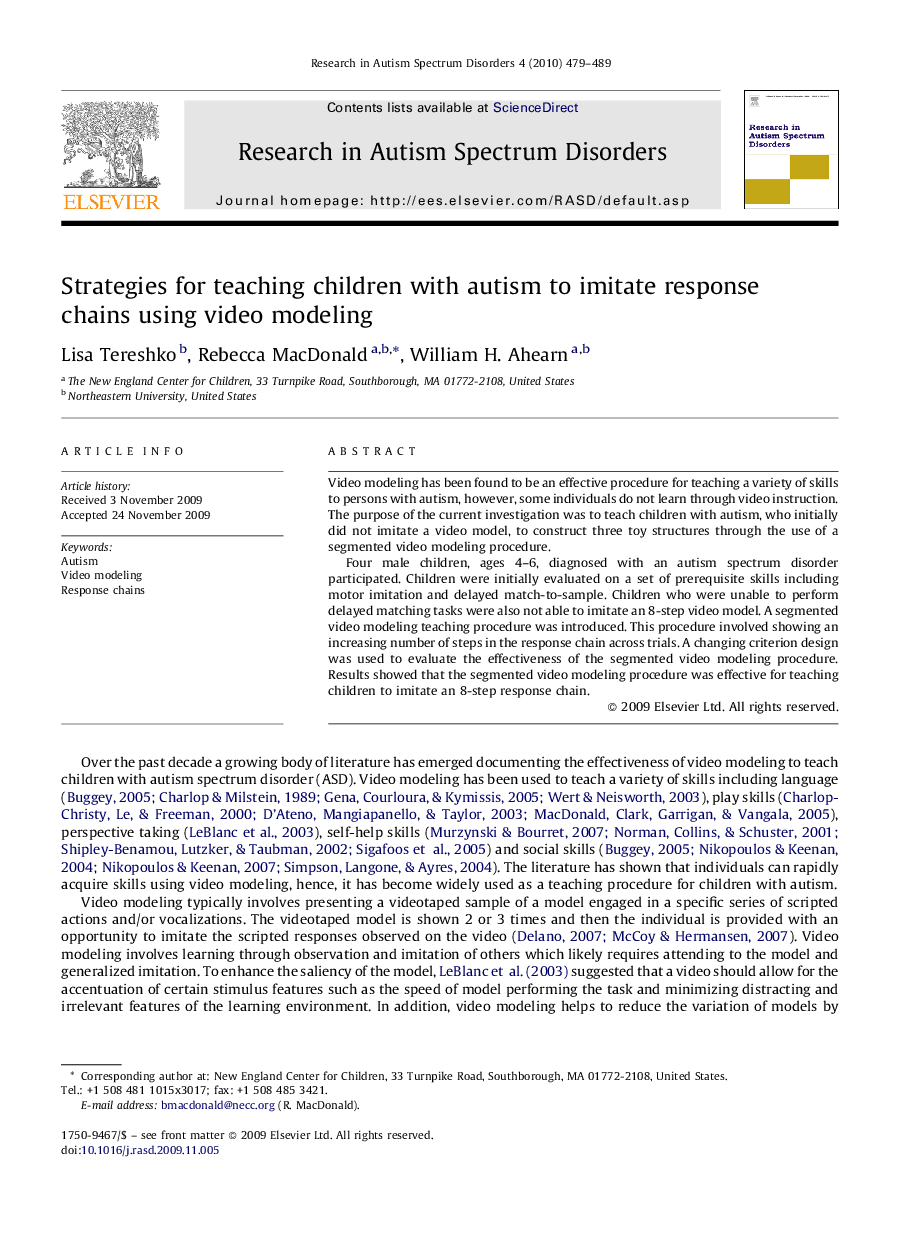| Article ID | Journal | Published Year | Pages | File Type |
|---|---|---|---|---|
| 370380 | Research in Autism Spectrum Disorders | 2010 | 11 Pages |
Video modeling has been found to be an effective procedure for teaching a variety of skills to persons with autism, however, some individuals do not learn through video instruction. The purpose of the current investigation was to teach children with autism, who initially did not imitate a video model, to construct three toy structures through the use of a segmented video modeling procedure.Four male children, ages 4–6, diagnosed with an autism spectrum disorder participated. Children were initially evaluated on a set of prerequisite skills including motor imitation and delayed match-to-sample. Children who were unable to perform delayed matching tasks were also not able to imitate an 8-step video model. A segmented video modeling teaching procedure was introduced. This procedure involved showing an increasing number of steps in the response chain across trials. A changing criterion design was used to evaluate the effectiveness of the segmented video modeling procedure. Results showed that the segmented video modeling procedure was effective for teaching children to imitate an 8-step response chain.
